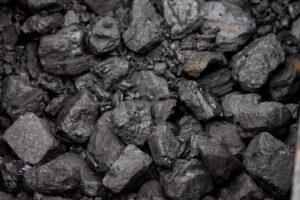
More money flowed into renewables than coal for the third year in a row in India, with 74% of the value of loans across both sectors in 2020 going to renewable energy projects, compared with 26% to coal, although this was up 40% on the previous year.
Primary financing to construct new projects dominated the funding landscape, with more than 88% of all deals categorised as primary financing deals, with refinancing constituting the remaining 12%. Commercial banks were the largest lenders and financing was overwhelmingly concentrated in just two Indian states.
These are some of the key findings of the latest ‘Coal vs. Renewables’ financial analysis conducted by Delhi-based Climate Trends (CT) and Centre for Financial Accountability (CFA).
The report assessed 42 project finance loans across 38 coal and renewable energy projects in India with a combined capacity of 7.5GW that reached financial close between 1 January 2020 and 31 December 2020. Total lending amounted to INR32,897 crore (US$4.44 billion), of which 74% flowed to renewable energy projects.
It also found that solar PV accounted for 81% of renewable energy deals and that, out of the sample, a total of INR24,376 crore (US$3.24 billion) went to renewables projects in 2020, all of which were solar and wind – a 6% year-on-year increase from 2019.
Meanwhile, commercial banks supplied INR13,731 crore (US$186 billion) to renewable energy projects, representing the majority (56%) of such loans. But state-owned actors continued to play an important role. The State Bank of India (SBI) was the single largest renewable energy lender, providing INR2,577 crore (US$347 million) into the sector—11% of all renewables loans.
Two states, Rajasthan and Gujarat, attracted 77% of all renewable energy loans, with Rajasthan (43%) edging Gujarat (34%) as the largest market. As in 2019, Bihar was the only state that secured lending for a coal-fired power plant. Indian solar’s story has been an uneven one when it comes to geography, with four states – Rajasthan, Gujarata, Uttar Pradesh and Maharashtra – accounting for the vast majority of deployment.
Coal lending in the country grew 40% from 2018 levels but this was still 85% lower than was provided to coal plants in 2017. “In other words, coal lending has remained at severely depressed levels,” said the report.
At the COP26 Climate Summit in Glasgow, Scotland, India committed to installing 500GW of non-fossil capacity by 2030, 450GW of which would come from renewable energy sources, and said it would rely on non-fossil fuels for close to 60% of its energy needs by the end of the decade.
In an interview with PV Tech earlier this year, research company Bridge to India’s managing director Vinay Rustagi said he expected India to have around 65GW of installed solar capacity by the end of 2022, which will fall short of its target of deploying 100GW of solar by then. That is despite India having roughly 50GW of installed solar capacity at present, according to the research by JMK.
PV Tech Premium has broken down all of the incentives and support schemes available to developers and manufacturers in India.
Picture courtesy: Pixabay
The original article published in PV Tech can be accessed here.
Centre for Financial Accountability is now on Telegram. Click here to join our Telegram channel and stay tuned to the latest updates and insights on the economy and finance.
